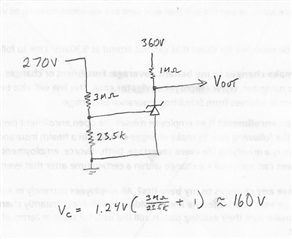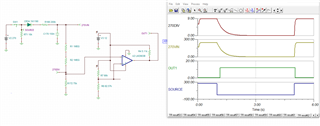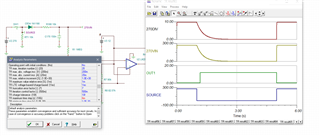Other Parts Discussed in Thread: TLVH431, LM2903B, LM2903

I am using the TLV431 in my design as a comparator. Note that there is a 8V Zener at Vout. When the 270V input line powers up slowly, Vout initially goes low, but then goes high (8V) before it reaches the cutoff voltage, 160V. When 270V pass the trigger point of 160V, Vout goes low again at about 0.8V. The problem I am having with this design is when I slowly power down and approach 160V, Vout becomes very noisy from 166 to 160v before Vout goes low. I realize that TLV431 does not have a Hysteresis feature, but before I add one to this circuit, I need to understand why so noisy within 166v to 160v. The transition does not happen quick from low to high on Vout. Seems that the output transistor of the TLV431 does not saturate quickly at 160V or the pull down is very weak going to the trigger point. I tried lowering the current limiting resistor of 1Meg to 500k ohms, but I see no change. The datasheet shows a recommended operating range between 0.100 to 15 mA. Using a limiting 500Kohm resistor, my cathode current is 720uA. Any help is appreciated.




